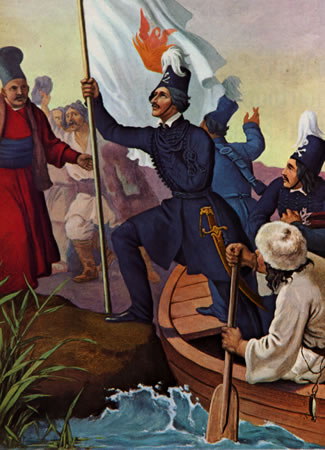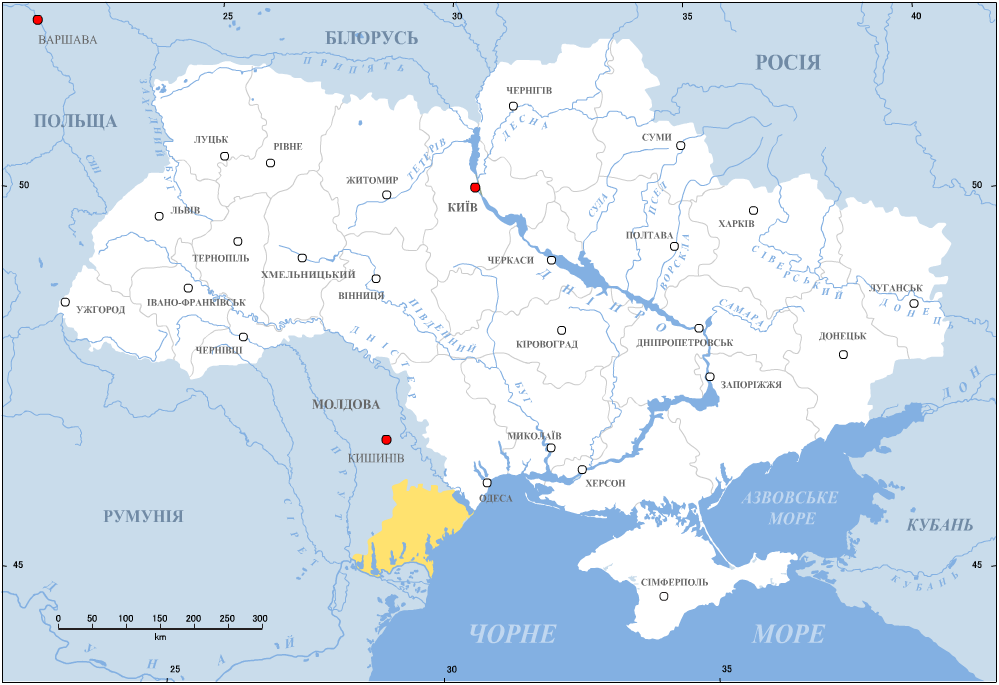|
Bugeac Steppe
The Bugeac Steppe, Budjak Steppe or Budzhak Steppe ( ro, Stepa Bugeacului; uk, Буджацький степ, Budzhats'kyy step) is a steppe located in the south of Ukraine and Moldova from the Dniester to Prut rivers reaching down to the Black Sea. The Bugeac Steppe has a total surface of 3,210 km2, of which 6.1% is forest. See also * Budjak Budjak or Budzhak (Bulgarian and Ukrainian: Буджак; ro, Bugeac; Gagauz and Turkish: ''Bucak''), historically part of Bessarabia until 1812, is a historical region in Ukraine and Moldova. Lying along the Black Sea between the Danube ... References Grasslands of Moldova Grasslands of Ukraine {{Ukraine-geo-stub ... [...More Info...] [...Related Items...] OR: [Wikipedia] [Google] [Baidu] |
Steppe
In physical geography, a steppe () is an ecoregion characterized by grassland plains without trees apart from those near rivers and lakes. Steppe biomes may include: * the montane grasslands and shrublands biome * the temperate grasslands, savannas and shrublands biome A steppe may be semi-arid or covered with grass or with shrubs or with both, depending on the season and latitude. The term " steppe climate" denotes the climate encountered in regions too dry to support a forest but not dry enough to be a desert. Steppe soils are typically of the chernozem type. Steppes are usually characterized by a semi-arid or continental climate. Extremes can be recorded in the summer of up to and in winter, . Besides this major seasonal difference, fluctuations between day and night are also very great. In both the highlands of Mongolia and northern Nevada, can be reached during the day with sub-freezing readings at night. Mid-latitude steppes feature hot summers and cold wint ... [...More Info...] [...Related Items...] OR: [Wikipedia] [Google] [Baidu] |
Ukraine
Ukraine ( uk, Україна, Ukraïna, ) is a country in Eastern Europe. It is the second-largest European country after Russia, which it borders to the east and northeast. Ukraine covers approximately . Prior to the ongoing Russian invasion, it was the eighth-most populous country in Europe, with a population of around 41 million people. It is also bordered by Belarus to the north; by Poland, Slovakia, and Hungary to the west; and by Romania and Moldova to the southwest; with a coastline along the Black Sea and the Sea of Azov to the south and southeast. Kyiv is the nation's capital and largest city. Ukraine's state language is Ukrainian; Russian is also widely spoken, especially in the east and south. During the Middle Ages, Ukraine was the site of early Slavic expansion and the area later became a key centre of East Slavic culture under the state of Kievan Rus', which emerged in the 9th century. The state eventually disintegrated into rival regional po ... [...More Info...] [...Related Items...] OR: [Wikipedia] [Google] [Baidu] |
Moldova
Moldova ( , ; ), officially the Republic of Moldova ( ro, Republica Moldova), is a Landlocked country, landlocked country in Eastern Europe. It is bordered by Romania to the west and Ukraine to the north, east, and south. The List of states with limited recognition, unrecognised state of Transnistria lies across the Dniester river on the country's eastern border with Ukraine. Moldova's Capital city, capital and largest city is Chișinău. Most of Moldovan territory was a part of the Principality of Moldavia from the 14th century until 1812, when it was Treaty of Bucharest (1812), ceded to the Russian Empire by the Ottoman Empire (to which Moldavia was a Vassal state of the Ottoman Empire, vassal state) and became known as Bessarabia. In 1856, southern Bessarabia was returned to Moldavia, which three years later united with Wallachia to form United Principalities, Romania, but Russian rule was restored over the whole of the region in 1878. During the 1917 Russian Revolution, B ... [...More Info...] [...Related Items...] OR: [Wikipedia] [Google] [Baidu] |
Dniester
The Dniester, ; rus, Дне́стр, links=1, Dnéstr, ˈdⁿʲestr; ro, Nistru; grc, Τύρᾱς, Tyrās, ; la, Tyrās, la, Danaster, label=none, ) ( ,) is a transboundary river in Eastern Europe. It runs first through Ukraine and then through Moldova (from which it more or less separates the breakaway territory of Transnistria), finally discharging into the Black Sea on Ukrainian territory again. Names The name ''Dniester'' derives from Sarmatian ''dānu nazdya'' "the close river." (The Dnieper, also of Sarmatian origin, derives from the opposite meaning, "the river on the far side".) Alternatively, according to Vasily Abaev ''Dniester'' would be a blend of Scythian ''dānu'' "river" and Thracian ''Ister'', the previous name of the river, literally Dān-Ister (River Ister). The Ancient Greek name of Dniester, ''Tyras'' (Τύρας), is from Scythian ''tūra'', meaning "rapid." The names of the Don and Danube are also from the same Indo-Iranian word ''*dānu'' "ri ... [...More Info...] [...Related Items...] OR: [Wikipedia] [Google] [Baidu] |
Prut
The Prut (also spelled in English as Pruth; , uk, Прут) is a long river in Eastern Europe. It is a left tributary of the Danube. In part of its course it forms Romania's border with Moldova and Ukraine. Characteristics The Prut originates on the eastern slope of Mount Hoverla, in the Carpathian Mountains in Ukraine (Ivano-Frankivsk Oblast). At first, the river flows to the north. Near Yaremche it turns to the northeast, and near Kolomyia to the south-east. Having reached the border between Moldova and Romania, it turns even more to the south-east, and then to the south. It eventually joins the Danube near Giurgiulești, east of Galați and west of Reni, Ukraine, Reni. Between 1918 and 1939, the river was partly in Poland and partly in Greater Romania (Romanian: ''România Mare''). Prior to World War I, it served as a border between Romania and the Russian Empire. After World War II, the river once again denoted a border, this time between Romania and the Soviet Union. Nowa ... [...More Info...] [...Related Items...] OR: [Wikipedia] [Google] [Baidu] |
Black Sea
The Black Sea is a marginal mediterranean sea of the Atlantic Ocean lying between Europe and Asia, east of the Balkans, south of the East European Plain, west of the Caucasus, and north of Anatolia. It is bounded by Bulgaria, Georgia, Romania, Russia, Turkey, and Ukraine. The Black Sea is supplied by major rivers, principally the Danube, Dnieper, and Don. Consequently, while six countries have a coastline on the sea, its drainage basin includes parts of 24 countries in Europe. The Black Sea covers (not including the Sea of Azov), has a maximum depth of , and a volume of . Most of its coasts ascend rapidly. These rises are the Pontic Mountains to the south, bar the southwest-facing peninsulas, the Caucasus Mountains to the east, and the Crimean Mountains to the mid-north. In the west, the coast is generally small floodplains below foothills such as the Strandzha; Cape Emine, a dwindling of the east end of the Balkan Mountains; and the Dobruja Plateau considerably farth ... [...More Info...] [...Related Items...] OR: [Wikipedia] [Google] [Baidu] |
Budjak
Budjak or Budzhak (Bulgarian and Ukrainian: Буджак; ro, Bugeac; Gagauz and Turkish: ''Bucak''), historically part of Bessarabia until 1812, is a historical region in Ukraine and Moldova. Lying along the Black Sea between the Danube and Dniester rivers, this sparsely populated multi-ethnic 600,000-people region of is located in the southern part of historical Bessarabia. Nowadays, the larger part of the region is included in Ukraine's Odesa Oblast, while the rest is included in the southern districts of Moldova. The region is bordered to the north by the rest of Moldova, to the west and south by Romania, and to the east by the Black Sea and the rest of Ukraine. Name and geography Historically, Budjak was the southeastern steppe region of Moldavia. Bordered by the northern Trajan's Wall at its north end, by the Danube river and Black Sea to its south, by Tigheci Hills (just east of the Prut River) to the west, and Dniester River to the east, it was known as ''histori ... [...More Info...] [...Related Items...] OR: [Wikipedia] [Google] [Baidu] |
Grasslands Of Moldova
A grassland is an area where the vegetation is dominated by grasses (Poaceae). However, sedge (Cyperaceae) and rush (Juncaceae) can also be found along with variable proportions of legumes, like clover, and other herbs. Grasslands occur naturally on all continents except Antarctica and are found in most ecoregions of the Earth. Furthermore, grasslands are one of the largest biomes on earth and dominate the landscape worldwide. There are different types of grasslands: natural grasslands, semi-natural grasslands, and agricultural grasslands. They cover 31–69% of the Earth's land area. Definitions Included among the variety of definitions for grasslands are: * "...any plant community, including harvested forages, in which grasses and/or legumes make up the dominant vegetation." * "...terrestrial ecosystems dominated by herbaceous and shrub vegetation, and maintained by fire, grazing, drought and/or freezing temperatures." (Pilot Assessment of Global Ecosystems, 2000) * "A r ... [...More Info...] [...Related Items...] OR: [Wikipedia] [Google] [Baidu] |





